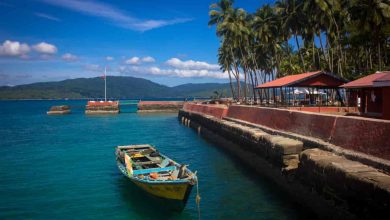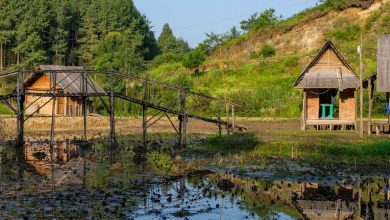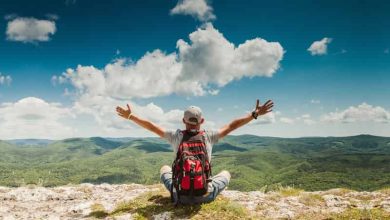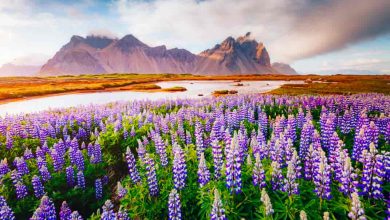Hey, travel buffs, join us as we explore the fascinating realm of volcanoes in India and witness an awe-inspiring trip to experience the untamed forces of nature.
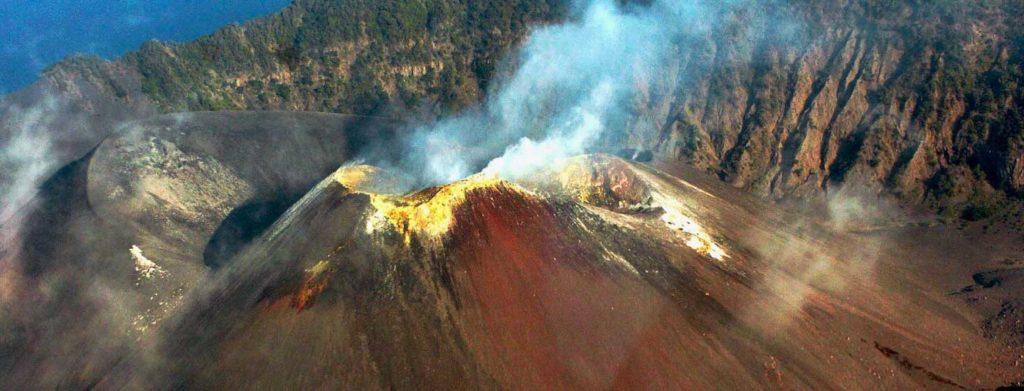
These magnificent forces of our planet are both amazing and fearsome at the same time. Enjoy the spellbinding sight of these majestic volcanoes in India that inspire amazement and wonder.
Volcanoes are found on every continent, calling adventurous people to explore their magnificence from the serene coastlines of tropical islands to the untamed landscapes of far-off regions. And do you know why humans greatly enjoy residing adjacent to volcanoes? They enhance tourism and make the soil rich in minerals and productive.
Join us as we explore the popular volcanoes in India. Get ready to feel amazed.
Here is a list of the 7 volcanoes in India
1. Barren Island
In the Andaman Sea, 138 kilometres (km) northeast of Port Blair lies Barren Island, known to be one of the volcanoes in India. Barren Island, which is just 3 kilometres wide and has a volcano crater that is 2 kilometres wide, is the top of a volcano that rises around 2,250 metres above the ocean’s surface. The volcano’s first recorded eruption was in 1787.
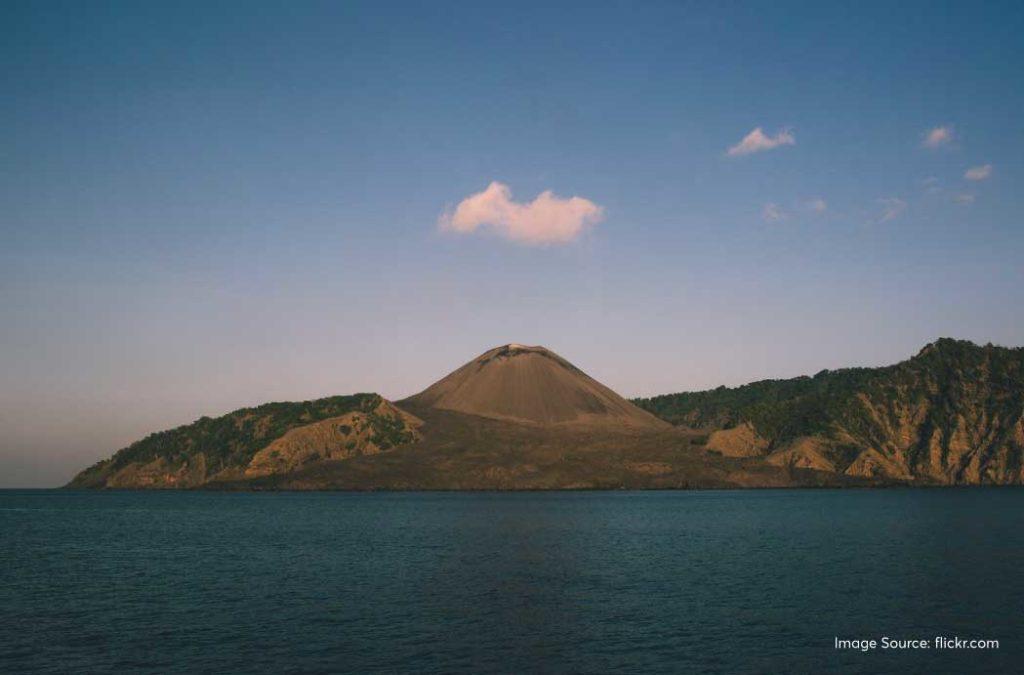
Along the chain from Sumatra to Myanmar, it is the only active volcano in India and in the entire stretch. Many tourists take a boat ride to see the island from a distance. This location is also one of the best for scuba diving, and many scientists have visited the island in the past to conduct research studies and ground analyses. Thousands of visitors from all over the world come here to experience the breathtaking view of the active volcano in India.
- Best Time to Visit – November through February.
- Things To Do – Volcano expedition, scuba diving, snorkeling, wildlife spotting, photography, nature walks, sunset cruise and relaxation in the beach.
2. Narcondam Island
Narcondam Island, a small volcanic island that is still inhabited and is part of the Andaman and Nicobar Islands, has recently become a popular tourist destination. The island is only 6.8 square kilometres in size, has a height of 710 metres, and is made of volcanic rock. It is mostly recognised for the on-land dormant volcano that it houses amongst all other volcanoes in India.
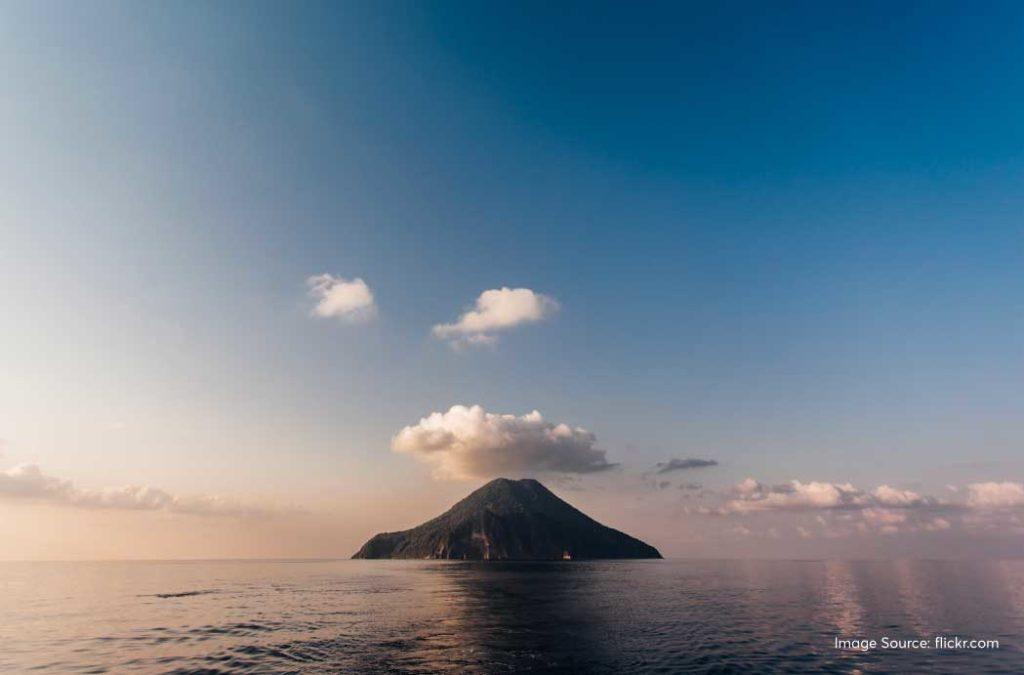
Narcondam Island was abandoned and remained unoccupied for a very long period because of the volcano there. But recently, a lot of visitors have been attracted to the area because of its unspoiled and unexploited deep woods, clean waterways, unspoiled beaches, and sheer scenic attractiveness. The area is home to numerous birds and offers a diverse biodiversity because of its abundant natural beauty.
Narcondam Island Wildlife Sanctuary has been declared a wildlife sanctuary to protect the endangered Narcondam hornbill by the Indian government. Additionally, you may go scuba diving, go up Narcondam Mountain, the island’s tallest peak, and explore the lush, verdant woods.
- Best Time to Visit: During December to April when the weather is pleasant, and the sea is calm.
- Things to Do: Wildlife exploration (do keep your eyes peeled for the rare and endangered Narcondam hornbill), scuba diving, snorkeling, bird watching and photography.
Please note – The island is a protected area, and visitors must adhere to the rules and regulations set forth by the authorities.
3. Deccan Traps
The Deccan Traps, a vast, rocky plateau in western India, one of the volcanoes in India were created when molten lava solidified and transformed into rock. Do you know that the Deccan Traps were formed when magma from deep within the Earth exploded to the surface around 66 million years ago?
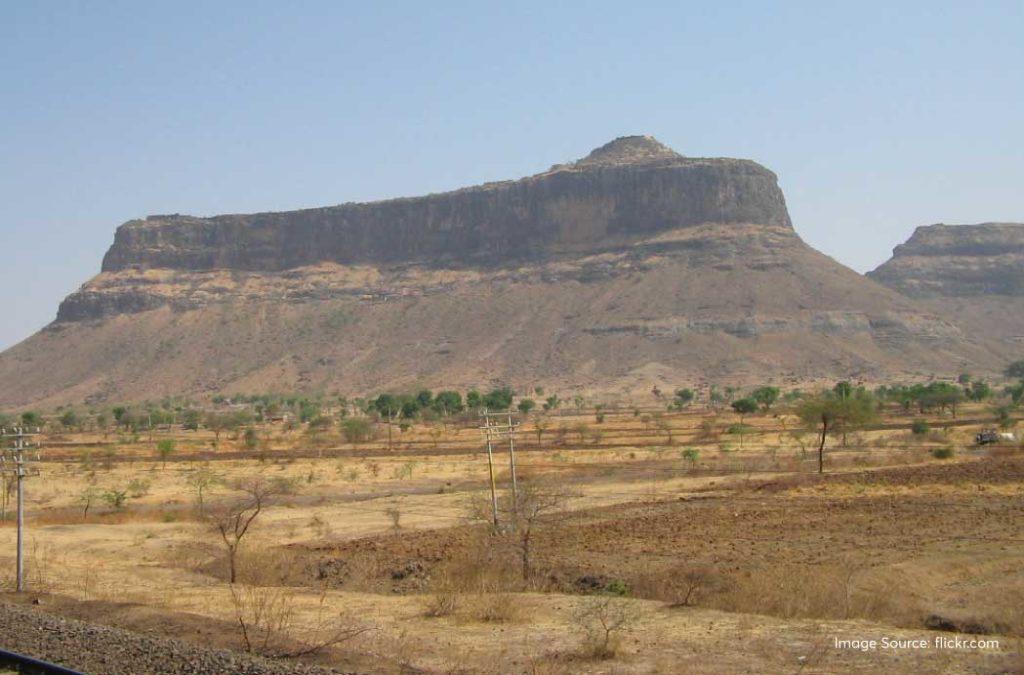
Underneath the Deccan Traps’ impressive surface is a startling volcanic heritage that extends over 2 kilometres below the earth’s surface. One of the most major volcanic eruptions to have ever affected our planet’s landmasses, this enormous stretch of volcanic strata is proof of the tremendous force that was released. This second-in-magnitude geological wonder serves as a humbling reminder of nature’s amazing feature and demonstrates the size of the planet’s fiery powers.
Here’s an interesting piece of information that will bite the travel bug within you to go visit the Deccan Traps. Some scientists even believe that the dinosaurs’ rapid collapse may have been influenced by extreme volcanism even before a comet or asteroid strike doomed them.
- Best time to visit: During the winter months, from November to February, when the weather is cool and pleasant.
- Things to Do: Geological exploration of the volcanic rock formations, basaltic lava flows, a result of ancient volcanic activity. Take leisurely walks or adventurous hikes. Keep an eye out for unique bird species, reptiles, and small mammals. Visit ancient temples, caves, and archaeological sites in the area. Capture the stunning landscapes and geological formations of the Deccan Traps. Indulge in the area’s local cuisine.
Tips: It is advisable to travel with a knowledgeable guide who can provide insights into the geological significance.
4. Baratang
Baratang is well known for its beautiful limestone caves and tangles of mangrove streams and has a unique feature amongst the volcanoes in India. There are mud volcanoes and small, interesting tidal swamp forests here. Baratang is situated between the Middle and South of Andaman and is a popular 1-day vacation spot because it is only about 100 km away from Port Blair. Hiring a private car or boarding a private AC bus is the easiest and most convenient method to go to Baratang. Taking a government bus from Port Blair is your best option if you want to go to Baratang as affordably as possible.
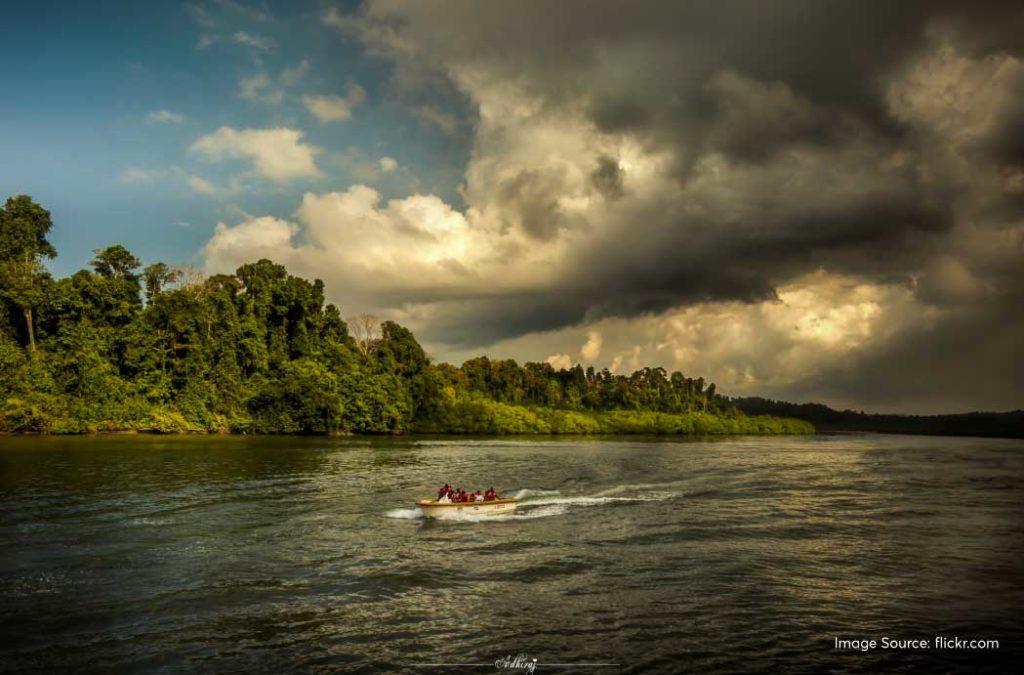
It is forbidden for two-wheelers to travel all the way to Baratang. The “Andaman Trunk Road” (ATR) is the route you have to take, and you must proceed in convoy with just one short vehicle-ferry link between the islands. Please be aware that you may see members of the native Jarawa tribe and other tribes along the sides of the roads as you pass through the ATR.
Entertaining them is a strict No No!
- Best Time to Visit: From November to February, when humidity is relatively low.
- Things to Do: Explore the fascinating limestone caves, witness the unique phenomenon of mud volcanoes cruise through dense mangrove forests, visit Parrot Island to witness thousands of parrots returning to their roosting sites, unwind on the pristine beaches, observe a diverse range of bird species such as kingfishers, eagles, and herons.
Tips: Remember to check the tides and permit requirements for visiting certain attractions in Baratang.
5. Dhinodhar Hill
Gujarat’s Kutch area is home to Dhinodhar Hills, a tourism and pilgrimage site. Sedimentary rocks developed over millions of years make up the hills. It nourishes a range of wildlife and is home to some unusual plant species. Additionally, the hill is an attractive spot for trekkers and rock climbers.
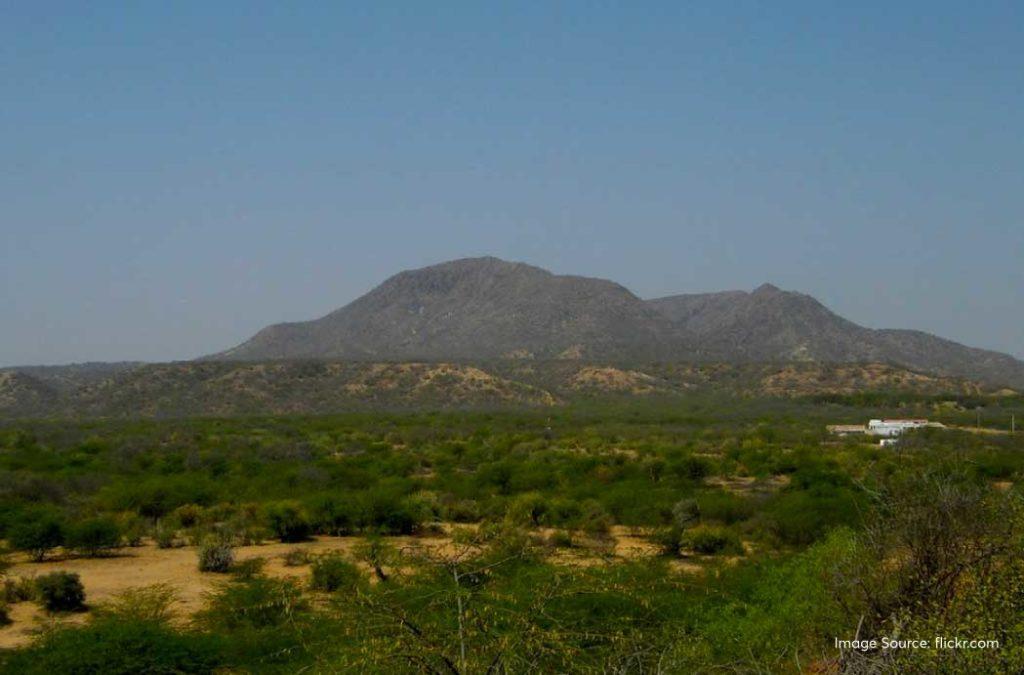
Dhinodhar Hill, a volcanic plug rising above the sandstone rock, is 386 metres above sea level and is made of relatively new, extremely fine-grained aphanitic rock.
Dhinodhar Hill is renowned for its cultural significance in addition to its natural beauty. There are numerous historic Jain temples, notably the Shri Ghantakarna Mahavir Jain Temple and the 1008 Shri Parshwanath Jain Derasar. These temples are significant Jain’s pilgrimage destinations that draw tourists from all around India here.
- Best Time to Visit – Winter months that allow for comfortable exploration of the hills.
- Things to Do – Hiking and trekking, capture photos of the breathtaking vistas during sunrise and sunset, explore the diverse plant life, spot a variety of bird species like peafowls, partridges, and several species of songbirds, explore nearby attractions such as historical monuments, ancient temples, or nearby villages.
Tips: Remember to wear appropriate footwear and carry essentials.
6. Dhosi Hill
Dhosi Hill is situated near the border of Rajasthan and Haryana, only 10 KM from Narnaul. It is a section of the Aravali Range, which rises 800 feet above sea level. It is one of the most revered locations close to Gurugram, Haryana.
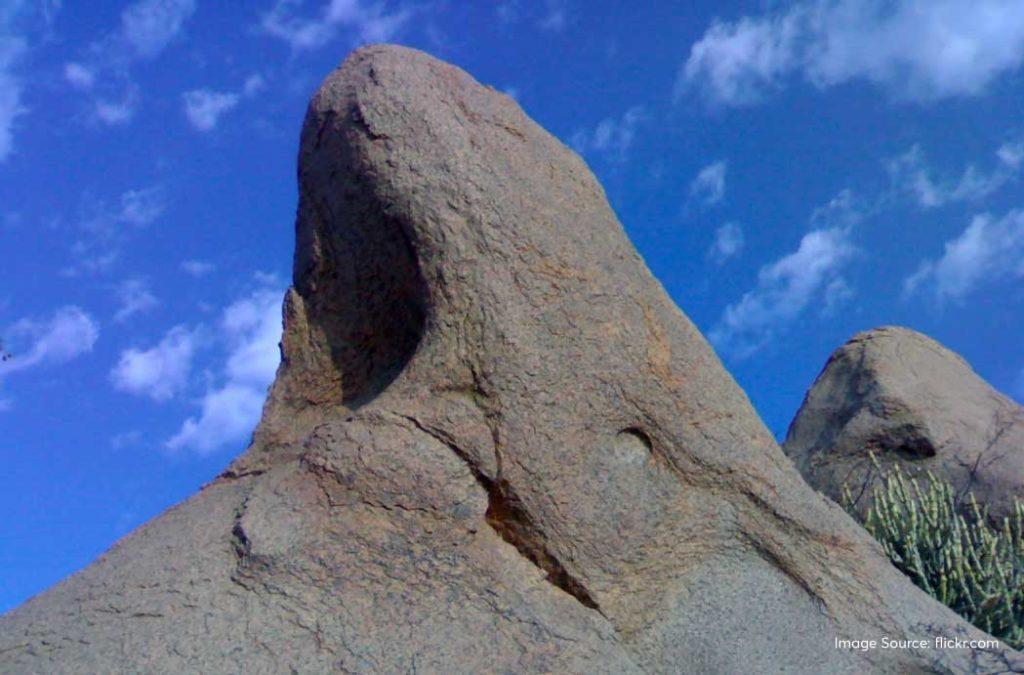
Numerous Hindu texts, including the Mahabharata, the Brahamanas, and the Puranas, refer to the Dhosi hill. The extinct volcano Brahmavarta, also known as Dhosi Hill, is renowned for having erupted before the time of the Mahabharata. It is also known as Brahmavarta. The abandoned stronghold of Hemu and the place where the Ayurvedic herbal medicine Chyawanprash, made for Chyavan Rishi, was created here.
Time to unearth the forgotten chapters of the past with these 7 caves in India
The Indira Gandhi International Airport in Delhi, which is around 130 kilometres away, is the closest airport to Dhosi Hill. To get to the Hill from the airport, you can also take a bus or a cab. Narnaul Railway Station, which is situated on the Delhi-Rewari-Jaipur railway line, is the station closest to Dhosi Hill.
- Best Time to Visit – Winter months, from October to March.
- Things to Do – trekking and hiking, visit Dhosi Hill Temple, watch migratory birds, mammals and reptiles, take leisurely nature walks, visit Nuh Fort, a historical landmark, interact with the locals and learn about their traditions.
7. Tosham Hills
The Precambrian Malani igneous suite of rocks, which are found in the Tosham hill range, are dated to 732 million years ago. They are part of the subsurface northwestern spur of the Aravalli Mountain Range, and are exposed in and around the Tosham hill range.

The outer ring of a fallen chamber from an extinct volcano is still present in the Aravalli Craton as this range. Within the “western-southern Haryana” spur of the Northern Aravalli leopard wildlife corridor, it is a significant biodiversity region.
- Best time to visit – From October to March when the weather is pleasant.
- Things to Do – trekking and hiking, rock climbing, visit the famous Tosham Rock, explore the historical Asigarh Fort, interact with locals and learn about their culture, carry binoculars and engage in birdwatching.
In Conclusion
The entire world has around 1,350 volcanoes that might be active, excluding the continuous bands of volcanoes at the Mid-Atlantic Ridge. Of the 1,350 volcanoes, about 500 have erupted in recorded history. Numerous examples of these may be seen along the Pacific Ocean’s rim, often known as the “Ring of Fire.” One of the most well-known is the active volcano on Barren Island in India. The other volcanoes in India are also a must-visit to understand the geography of the country.
